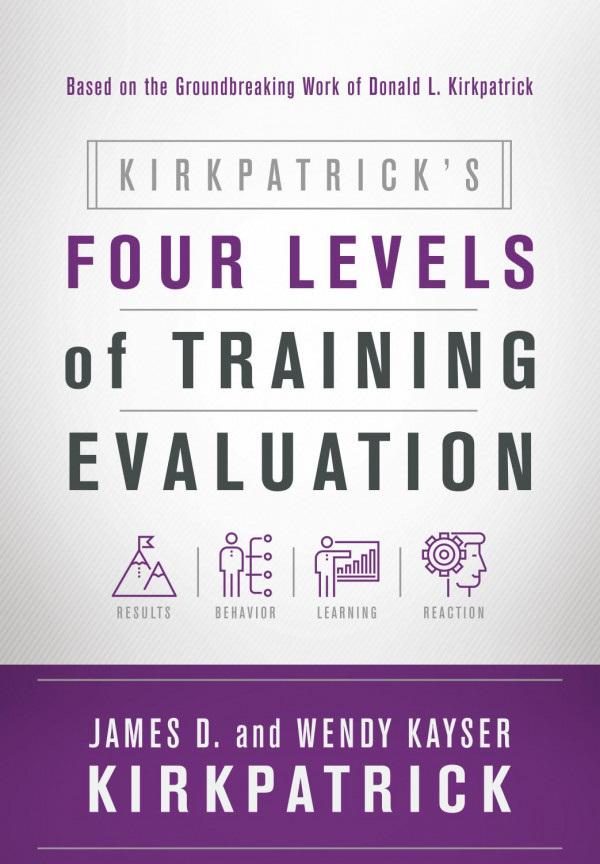

Most ebook files are in PDF format, so you can easily read them using various software such as Foxit Reader or directly on the Google Chrome browser.
Some ebook files are released by publishers in other formats such as .awz, .mobi, .epub, .fb2, etc. You may need to install specific software to read these formats on mobile/PC, such as Calibre.
Please read the tutorial at this link. https://ebooknice.com/page/post?id=faq
We offer FREE conversion to the popular formats you request; however, this may take some time. Therefore, right after payment, please email us, and we will try to provide the service as quickly as possible.
For some exceptional file formats or broken links (if any), please refrain from opening any disputes. Instead, email us first, and we will try to assist within a maximum of 6 hours.
EbookNice Team

Status:
Available4.8
22 reviews
ISBN-10 : 1607280086
ISBN-13 : 9781607280088
Author: James D. Kirkpatrick, Wendy Kayser Kirkpatrick
Don Kirkpatrick's groundbreaking Four Levels of Training Evaluation is the most widely used training evaluation model in the world. Ask any group of trainers whether they rely on the model's four levels Reaction, Learning, Behavior, and Results in their practice, and you'll get an enthusiastic affirmation.
But how many variations of Kirkpatrick are in use today? And what number of misassumptions and faulty practices have crept in over 60 years? The reality is: Quite a few.
Part 1: Basics of Evaluation
Chapter 1: Reasons for Evaluating
The Urgent Need to Create and Demonstrate Training Value
Three Reasons to Evaluate Training Programs
Summary
Chapter 2: The New World Kirkpatrick Model—An Overview
The Four Levels
The New World Kirkpatrick Model
The Four Levels in Reverse
Summary
References
Chapter 3: Developing an Effective Evaluation Strategy
A Cautionary Tale
Not All Programs Are Created Equal
Three Phases of a Program
Training Is Like Flying a Plane
Summary
Chapter 4: The Kirkpatrick Foundational Principles
Kirkpatrick Foundational Principles
Summary
Part 2: Data Collection Guidelines, Methods, and Tools
Chapter 5: Evaluating Level 1: Reaction
Methods, Tools, and Techniques
Timing
Keep It Simple
Summary
Chapter 6: Evaluating Level 2: Learning
Methods, Tools, and Techniques
Timing
Summary
Chapter 7: Evaluating Level 3: Behavior
Research on the Importance of Post-Training Support
Defining the Few, Critical Behaviors
A Few Words About Competencies
Methods, Tools, and Techniques
Timing
Summary
Chapter 8: Evaluating Level 4: Results
Identifying Leading Indicators
The Benefits of Identifying Leading Indicators
Methods, Tools, and Techniques
Timing
Summary
Chapter 9: Evaluating Beyond Traditional Classroom Training
How to Evaluate E-Learning
How to Evaluate Informal Learning
How to Evaluate Mobile Learning
Summary
Chapter 10: Evaluation Instrument Creation Basics
Typical Questions
The Key to Success
Summary
Chapter 11: Blended Evaluation® Items and Sample Tools
The Blended Evaluation® Approach
Using Learner-Centered Items
Sample Methods and Tools
Item Library for Use Immediately Following Training
Item Library for Delayed Use After Training
Summary
Part 3: Data Analysis and Reporting Basics
Chapter 12: Making Data-Based Decisions
Three Key Data Analysis Questions
Summary
Chapter 13: Using the Success Case Method to Drive Performance and Results
Defining Success
Training Evaluation Realities
Summary
Chapter 14: So What? Now What?
The Questions That Need to Be Answered
A Business Person’s Criteria
PDCA Cycle
What Management Wants to Know
Outputs Versus Outcomes
Summary
References
Chapter 15: Reporting Progress and Demonstrating Program Value
Sharing Training Outcomes
Reporting Program Progress
Making an Impactful Final Report
Summary
Chapter 16: Avoiding Common Evaluation Pitfalls
Pitfall #1: Addressing Evaluation Requirements After a Program Has Launched
Pitfall #2: Viewing All Training Programs as Equal
Pitfall #3: Spending the Majority of Your Training Evaluation Resources on Levels 1 and 2
Pitfall #4: Relying Solely on Standardized Surveys
Pitfall #5: Asking Questions That Don’t Generate Useful Data
Pitfall #6: Making Evaluation Too Complicated or Academic
Pitfall #7: Not Using Collected Data
Summary
References
Part 4: Case Studies
Chapter 17: Common Practice in Leadership Program: Greencore Northampton
Stakeholder Expectations
Program Structure
Evaluation Methods and Tools
Results of Pilot
Summary
Chapter 18: Service Over and Above the Rest (SOAR) Program: Emirates Airline
Actions
Pre-SOAR Preparation
SOAR and Coach for Performance Formal Training
Formalized on-the-Job Support
The Evaluation and Reward Strategy
Results
Summary
Chapter 19: Sales Graduate Program Pilot: ArjoHuntleigh Getinge Group
Business Need and Program Intent
Stakeholder Expectations
Project Methodology
Evaluation Approach
Key Level 3 Findings
Key Level 4 Findings
Success Factors
Recommendations
Summary
Chapter 20: Accident Reduction Program: Maryland Transit Administration
Project Methodology
Required Drivers
Evaluation Methodology
Key Findings and Results
Program Success Factors
Barriers to Success
Summary
Chapter 21: Coaching Program: IHC New Zealand
Stakeholder Expectations
Critical Behaviors
Project Methodology
Evaluation Methods
Key Findings and Results
Success Factors
Barriers to Success
Recommendations
Summary
Call to Action
Your Personal Action Plan
kirkpatrick's four levels of training evaluation citation
kirkpatrick's four levels of training evaluation book
kirkpatrick's four levels of training evaluation atd press
what are the four levels of training evaluation
what is kirkpatrick's model of training evaluation
Tags: Kirkpatrick, Four Levels, Training Evaluation, James Kirkpatrick, Wendy Kayser Kirkpatrick